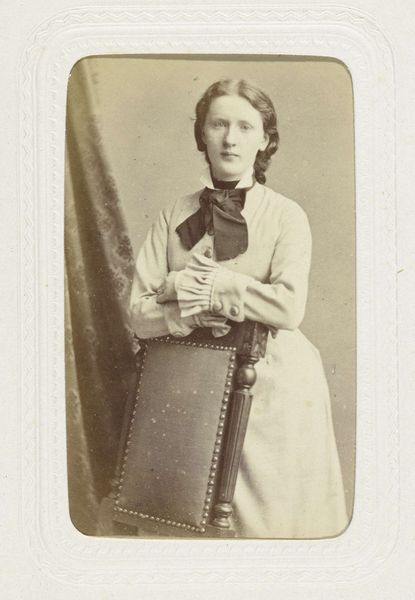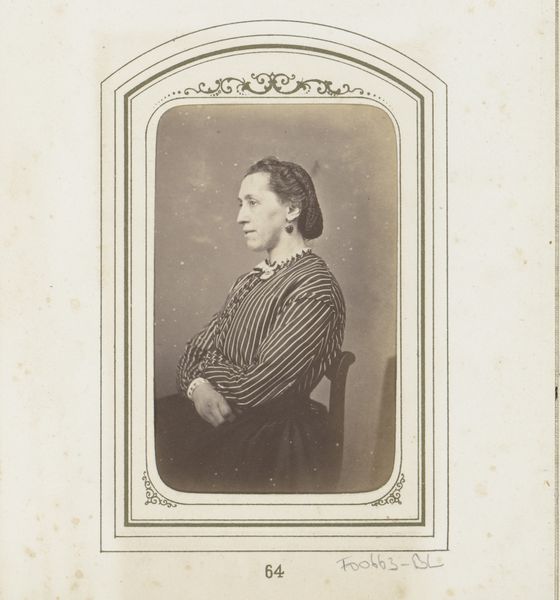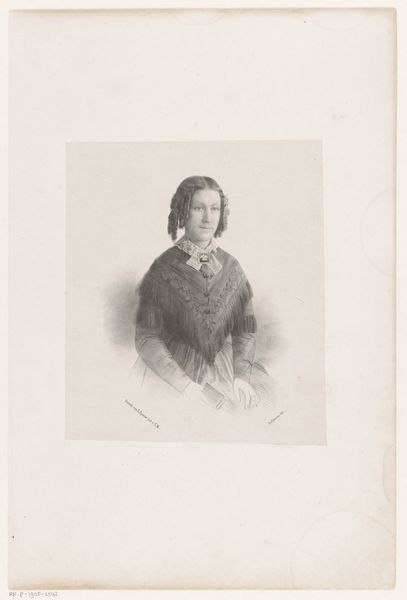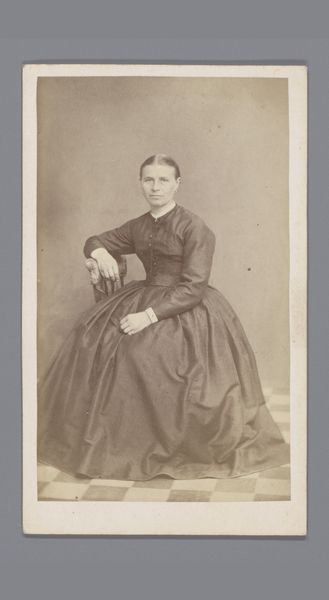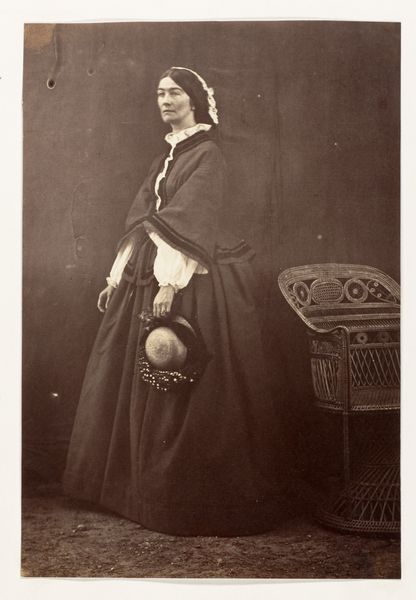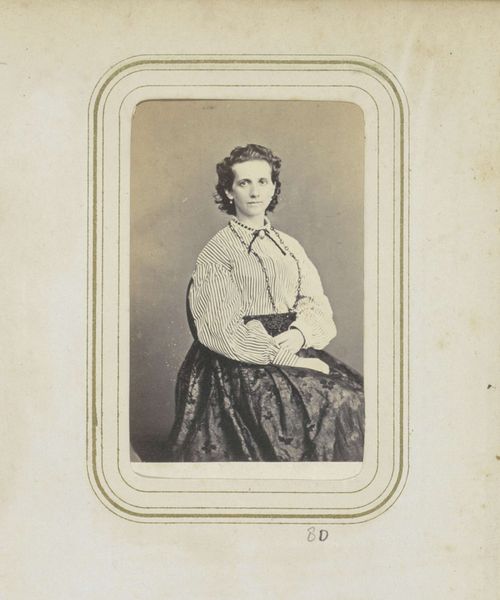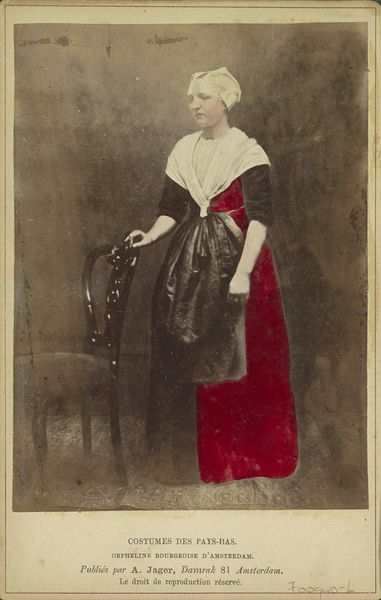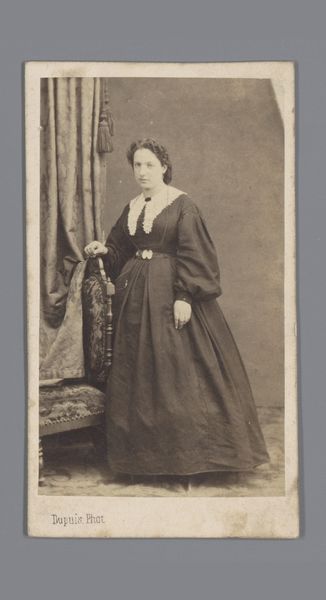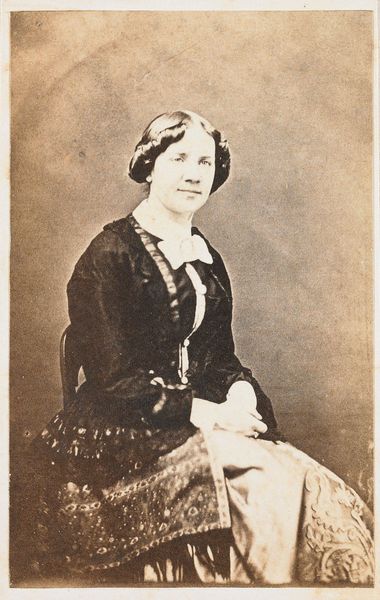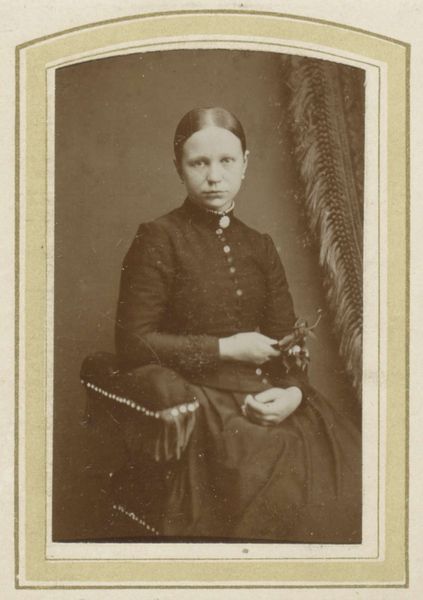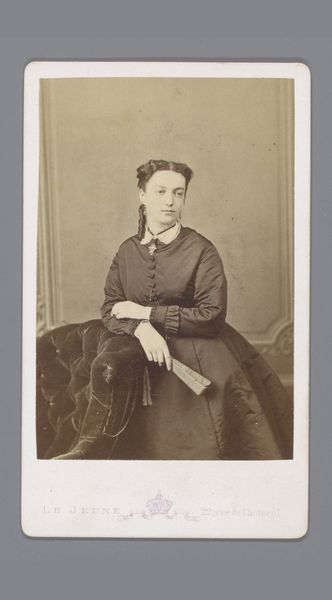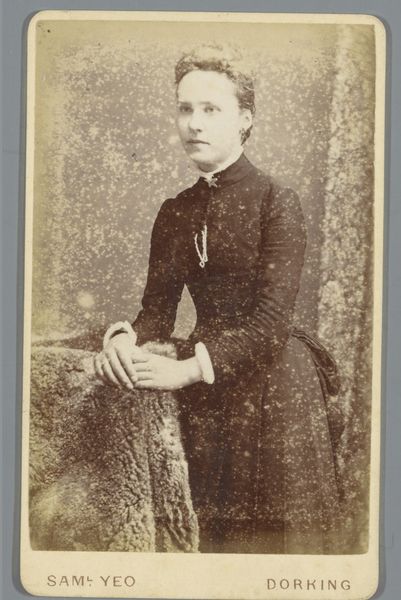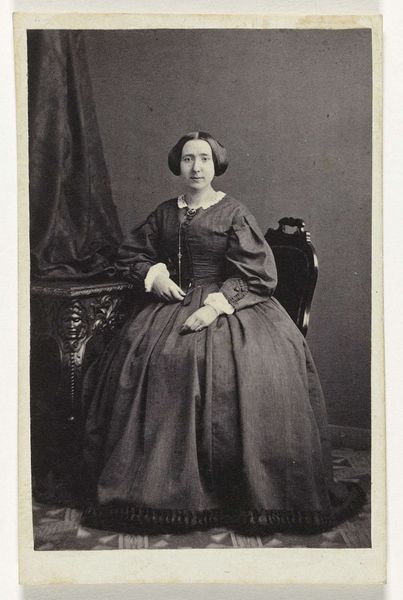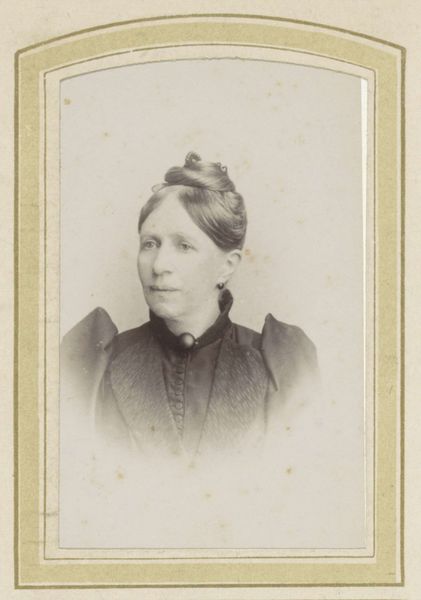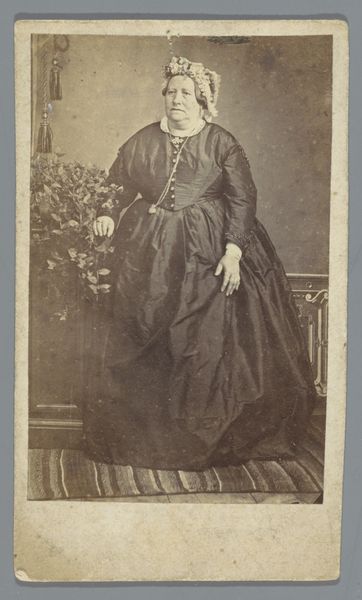
photography, gelatin-silver-print
#
portrait
#
still-life-photography
#
photography
#
historical photography
#
gelatin-silver-print
#
portrait photography
#
realism
Dimensions: 9.8 x 13.3 cm. (3 7/8 x 5 1/4 in.)
Copyright: Public Domain
Curator: What do you make of this photographic print, "Le Grand Russe," dating back to the 1860s and crafted by Pierre-Louis Pierson? Editor: Stark. The composition, particularly the vertical emphasis and the relatively blank background, lend it an almost haunting quality. Curator: Indeed. The work offers insight into the aesthetics and representation of gender during the Second Empire. Pierson, deeply involved within court circles, navigated complex dynamics within a highly-stratified society. His association with Countess de Castiglione and his commission to photograph her points toward interesting public roles for photographic prints. Editor: Semiotically rich! Look at how the stark attire interacts with the subject’s gaze, establishing what feels like an acute dialogue between materiality and affect. And the limited tonal range— it is amazing what shades of sepia achieve here. Curator: Considering its historical moment, photography offered an opportunity to explore and consolidate power through visual representation. The Countness in this picture became part of a system in which the nobility exerted power to shape a constructed political message in post revolutionary France. Editor: Yet within these contextual currents, one can also see Pierson subtly challenging pictorial conventions of photography in portraiture by eliminating embellishment in favor of emphasizing a connection between form and the reality of representation. There is even the tension in her almost casual pose against the sharp linearity of the garment. Curator: Certainly. Pierson worked within and against existing structures. Viewing such portrait through this scope helps unravel nuanced dialogues present within the artistic works of that time. Editor: And through an engagement with form, the photo almost defies straightforward historical framing… leaving more space for open interpretations that go beyond this very rigid sense of statecraft. I find myself thinking now about the interplay between surface and depth. Curator: Yes, in revisiting Pierre-Louis Pierson and his connections to social and political constructs of the Second Empire we encounter new interpretations for an otherwise opaque portrait. Editor: Right—allowing a more formal analysis to push beyond social interpretation for additional readings that highlight complexity rather than conclusive pronouncements!
Comments
No comments
Be the first to comment and join the conversation on the ultimate creative platform.
